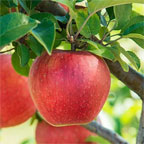- Q.Mulberry Tree - My fruitless mulberry tree has black under its bark on some branches--it's almost powdery to the touch. --Is my tree ...
- Q.Mulberry - where is it possible in the uk to buy a mulberry tree and would i only need one for fruiting?
- Q.White Mulberry Tree - I have bought a foot high white mulberry and didn't realize until I did a search, that they are huge ...
- Q.Dead Mulberry - I had a 15 year old, non-bearing, Mulberry tree die in 3 months. It lost its leaves in December (Pheonix, ...
- Q.Fruitless Mulberry Tree - I live Delta, Utah and I would like to know if the fruitless Mulberry tree will survive in Delta? My ...
- Q.Leaves On Fruitless Mulberry Tree - This is a second year tree. As leaves come out, edges are curled and whitish, and the tree does not ...
- Q.Do Mulberry Trees Grow In Manitoba? - I grew up in the south where we had mulberry trees, and I loved the fruit and the jam we ...
Q.Mulberry Tree
My fruitless mulberry tree has black under its bark on some branches--it's almost powdery to the touch. --Is my tree diseased? Is there something I can do to help it recover?
- A.
It sounds like sooty canker fungus. This article will help: https://www.gardeningknowhow.com/ornamental/trees/tgen/tree-disease-identification-sooty-canker-fungus.htm
Was this answer useful?00
Q.mulberry
where is it possible in the uk to buy a mulberry tree and would i only need one for fruiting?
- A.
I believe it is possible to buy them in the UK. While they can fruit without a tree of the other sex, the trick is making sure you get a female (fruiting) tree and not a male. Also, female trees produce better if there is a male tree within at least a few miles.
Was this answer useful?00 Q.White Mulberry Tree
I have bought a foot high white mulberry and didn't realize until I did a search, that they are huge trees. Can I grow it in a large pot and keep the roots trimmed? I live in Sydney, Australia, so it's quite clement weather. Also, should I fertilize soon, or wait for a while?
- A.
The following articles should be of some help to you:
https://www.gardeningknowhow.com/ornamental/trees/tgen/growing-trees-in-containers.htm
https://www.gardeningknowhow.com/special/containers/how-to-grow-container-trees.htmWas this answer useful?00 Q.Dead Mulberry
I had a 15 year old, non-bearing, Mulberry tree die in 3 months. It lost its leaves in December (Pheonix, AZ) and never came back. It looks like it was dipped in a vat of liquid nitrogen. I dug it up today and the roots are black, rotten and stinky. It was watered every 4-5 weeks in the winter and every 2 weeks in the summer via flood irrigation. Fertilized with cow manure yearly (we own the cow). Any ideas what this disease is? I've burned the tree and root ball and left the hole open to air out, but am concerned about my other trees. My other Mulberry, about 50 feet away has markedly small leaves this year.
- A.
The tree has definitely suffered from root rot as a result of overwatering, especially during the winter months. These trees do not need to be watered so much during their winter dormancy or you will run the risk of rotting the root system, which I think is the case here.
Was this answer useful?00 Q.Fruitless Mulberry Tree
I live Delta, Utah and I would like to know if the fruitless Mulberry tree will survive in Delta? My parents had them in Tucson, Arizona and we loved them. Fast growing and large leaves, which made it easy to clean up. We want to plant some trees at the church building for shade. If the fruitless Mulberry will not work, would you have a recommendation on what tree to plant?
- A.
The answer to your question is yes. These trees can be grown in your area. In fact, did you know that Mulberry trees represent a distinct phase of Utah’s history? The silk industry, which started in Utah during the 1860s and continued in some places for decades, relied on mulberry leaves as food for the silk worms.
Was this answer useful?00 Q.Leaves on Fruitless Mulberry Tree
This is a second year tree. As leaves come out, edges are curled and whitish, and the tree does not seem to be doing as good as it did the first year. You think it is not enough water? I do have it in the middle of a lawn.
- A.
Did you fertilize your lawn recently? Sometimes lawn fertilizer can be too much for a tree and the roots get burned, particularly if the ground was dry when the fertilizer was applied. This can cause the type of leaf damage you describe. Additional water will help it, if this is the case.
Was this answer useful?00 Q.Do Mulberry Trees Grow in Manitoba?
I grew up in the south where we had mulberry trees, and I loved the fruit and the jam we made with it. Do they grow in Manitoba and where could I buy them?



